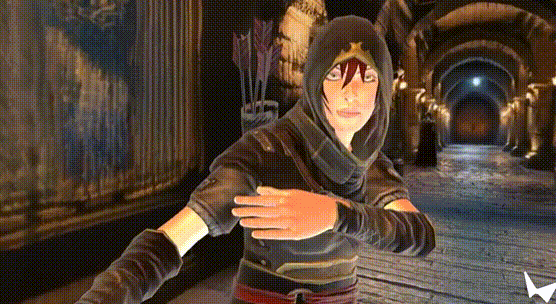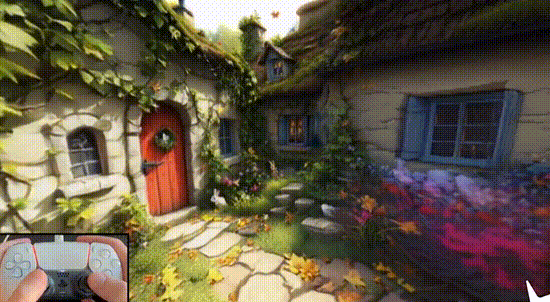In today’s rapidly advancing AI landscape, Professor Fei-Fei Li’s latest breakthrough has undoubtedly unveiled the mysterious future of technology.

As an AI scholar at Stanford University, Li’s entrepreneurial team has just launched a groundbreaking technology: a 3D generation system based on spatial intelligence. By simply using a 2D image and a short text description, users can generate a highly realistic 3D world. This technology is not just an extension of 2D generation but a quantum leap in immersive experiences, signaling that we are stepping into an entirely new digital era.
From 2D to 3D: A Technological Leap in AI
We are accustomed to conveying information and experiencing the world through 2D images. From social media to movie visuals, almost all digital content relies on flat images. However, this is set to fundamentally change with Professor Li’s technological breakthrough. The newly released 3D generation system utilizes generative AI to transform a simple 2D image and text description into a complete 3D scene. This leap from 2D to 3D marks a new milestone in AI’s spatial awareness and generation capabilities.

The change brought by this technology goes beyond “more efficient image generation.” It opens the door to immersive experiences. From traditional static flat images to interactive, detail-rich 3D worlds, AI is gradually breaking through our perceptions of digital content. In the showcased effects, AI can precisely generate 3D spaces based on a photo or artwork, giving these scenes geometric accuracy and dynamic interactivity. This is not only stunning but also offers endless possibilities for future applications.
The Future of Spatial Intelligence: How Will It Impact Our World?
Professor Li’s technological breakthrough is, in fact, a significant leap in the field of spatial intelligence. Spatial intelligence refers to AI’s ability to understand the physical structure of objects in three-dimensional space, their relationships, and dynamic interactions. This is not just a technical issue but involves deep innovation in cognitive models and computational thinking.

As this technology matures, we are on the brink of potential industry-wide revolutions. From film production to game development, and from virtual reality (VR) to augmented reality (AR) applications, all fields related to 3D scene generation and interactive experiences will become more accurate and efficient due to this technology. In the film and gaming industries, developers will be able to create highly interactive and realistic 3D worlds at lower costs and in less time. In VR and AR applications, generated 3D scenes will provide users with a stronger sense of immersion, making simulated training and education more vivid and effective.
AI-Driven Industry Transformation
Specifically, Professor Li’s 3D generation system could have profound impacts across multiple industries. In the film and gaming sectors, this technology will simplify and accelerate the creative process. Traditionally, creating high-quality 3D scenes requires significant time and resources, but AI integration will make this process more automated, controlled, and even allow smaller studios to create visually stunning works at a lower cost.

In education and healthcare, the introduction of 3D generation technology will bring entirely new teaching and training models. In medicine, realistic 3D scenes can be used for surgical simulations, allowing healthcare professionals to train in complex procedures in a safe virtual environment. In history education, students can “experience” historical events in VR and AR, gaining a deeper understanding of the background and process. This not only enhances educational immersion but also effectively improves learning outcomes.
Moreover, as AI’s understanding of 3D space deepens, robotics and autonomous driving technologies will also see breakthroughs. AI’s precise recognition and analysis of 3D environments will help robots complete tasks more efficiently, enhancing industrial production and logistics. In autonomous driving, AI’s mastery of spatial and physical laws will greatly improve safety and accuracy.
Towards the Future of AGI and ASI
Professor Li’s technological progress is not just a mere innovation; it lays the foundation for a broader AI future. From spatial intelligence to 3D generation, and from complex situational understanding to deep learning, AI’s application scenarios are rapidly expanding. As technology progresses, AGI (Artificial General Intelligence) and ASI (Artificial Superintelligence) will no longer be distant dreams from science fiction but tangible realities.
Meanwhile, has deeply recognized through Professor Li’s example that, standing at the forefront of technology, we are witnessing AI’s shift from basic applications to more profound intelligent breakthroughs. Our mission is to transform these cutting-edge technologies into practical solutions, allowing every user to experience the tremendous changes brought about by these technologies. We believe that future AI will not only be a tool but an extension of our intelligence, changing the way we work, live, and even think.
Choose the Future, Choose to Walk with LBAI
Professor Li’s breakthrough is just the beginning, and the future of artificial intelligence holds endless possibilities. LBAI is dedicated to pushing these cutting-edge technologies into practice, helping users achieve more efficient workflows and richer experiences. In this AI revolution, we are not just witnesses but leaders. Choosing to walk with LBAI means choosing to join this intelligent transformation toward the future. Let’s join hands and race toward a future of AGI and ASI, embracing a more intelligent world.
4o
